There are hidden winter threats to your roof
February 16, 2025 at 6:00 a.m.By J&K Roofing.
Maintain your roof to avoid damage from sleet and snow.
Cold winters can bring a slew of damaging factors to your roof. Freezing temperatures, snowfall and icy wind are all factors that come with harsh winter seasons, impacting your roof for several months out of the year. While your roof is there to protect you, it is not infallible against repeated battering from the elements without proper maintenance. Understanding the various winter conditions will help you protect your roof for the frigid winters ahead. The experts at J&K Roofing have everything you need to know about the winter months and the threat it poses against your roof’s lifespan.
How snow and ice can damage your roof
Ice damage to roofs often starts when heavy snow accumulates or when temperatures fluctuate between freezing and thawing. Snow that sits on a roof can create excessive weight, leading to structural strain. When this snow melts and refreezes, it can infiltrate roofing materials, causing cracks and even leaks. The severity of winter weather can amplify these issues, making proactive maintenance essential for every homeowner.
Key ways snow and ice can damage your roof if maintenance is ignored
Several specific issues arise when snow and ice accumulate on your roof. By knowing the risks, you’ll have a better sense of how to prevent winter damage before it becomes a major problem.
Ice dams
Ice dams form when heat escapes from your home’s attic, causing snow on the roof to melt. The melted snow runs down toward the colder roof edges, where it refreezes and creates a dam of ice. This buildup prevents further melting snow from draining off the roof. As a result, water backs up behind the ice dam, seeping under shingles and potentially leaking into the attic and interior walls. The freeze-thaw cycle of ice dams can lead to significant ice damage to roofs, including shingle cracking and splitting, shingle granule loss and water infiltration.
Preventing ice dams starts with ensuring proper attic insulation and ventilation. A roof inspection before winter can identify areas where insulation needs strengthening. Additionally, clearing snow from your roof and keeping gutters clear can reduce the likelihood of ice dam formation.
Freeze-thaw cycles
Freeze-thaw cycles are common, especially in early winter and spring. During a freeze-thaw cycle, snow or ice on your roof melts slightly during the day, only to freeze again at night. When water enters small cracks in your shingles or other roofing materials and refreezes, it can expand, causing these cracks to widen. Over time, this process leads to further ice damage to roofs, as shingles become more brittle and cracks expand. Routine roof inspections allow professionals to spot any roof issues before winter begins. Fixing these issues early prevents freeze-thaw damage from worsening.
Gutter damage
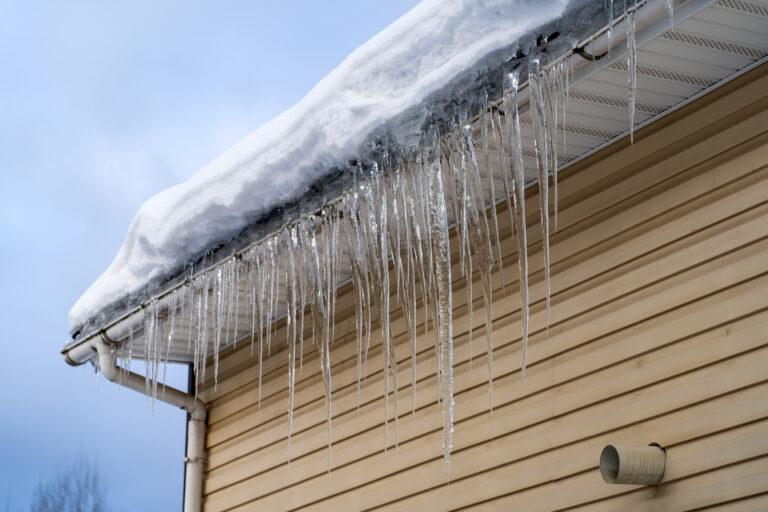
Gutters are highly susceptible to winter weather damage. When snow and ice collect in gutters, they can add significant weight, often causing the gutters to sag or even detach from the roofline. As gutters become overloaded, they also lose the ability to direct water away from your home effectively, increasing the risk of water pooling on your roof or around your foundation. To prevent gutter-related ice damage to roofs, regularly clear debris from gutters before winter and consider installing gutter guards. After heavy snowfall, gently remove any ice buildup from gutters to keep water draining efficiently.
Water infiltration and leaks
Melting snow and ice can be dangerous when it seeps under damaged shingles. If water gets through the roofing material, it can cause leaks that damage the interior structure of your roof. In addition to causing water stains on ceilings and walls, these leaks can contribute to mold growth, which poses health risks and increases repair costs. If you spot water stains or damp areas on your ceiling, contact a roofing professional immediately. Addressing minor leaks early can prevent more extensive ice damage to roofs.
Excessive snow load
Extreme snow loads are seen in mountain areas, and heavy snowfall events can still occur. When large amounts of wet snow pile up on your roof, the added weight can create structural strain. In rare cases, excessive snow load can even cause partial roof collapse. This kind of structural damage can be extremely costly and dangerous. If you notice snow build-up on your roof after a heavy storm, consider hiring a professional for safe removal. Roof rakes or snow removal services can help keep your roof safe without causing damage to shingles or gutters.
Signs of roof damage to watch for during winter
Being aware of potential signs of ice damage to roofs can help you catch issues early. Here are some common indicators to keep an eye out for during the winter months:
- Ice dams forming along the edges of your roof: Ice dams usually appear as thick, icy buildup at the roof’s edge and can lead to leaks if left untreated.
- Water stains or leaks inside the home: If you notice water spots on ceilings or walls, it could mean water infiltration due to ice damage or shingle issues.
- Sagging or damaged gutters: Gutters pulling away from the roofline or visibly sagging often indicate excessive ice buildup and possible damage.
- Visible cracks or warping in shingles: Ice damage to roofs can cause shingles to crack or warp. If shingles look brittle or out of place, they may need replacement.
If you spot any of these signs, call a roofing specialist for an inspection. Early detection and repair can prevent more extensive problems down the road.
Preventive measures and regular maintenance tips
Prevention and routine maintenance play a huge role in protecting your roof from ice damage. Implementing the following tips can help keep your roof in excellent condition throughout the winter:
Clear snow and ice safely
Removing snow and ice from your roof can reduce the risk of ice dams and excessive snow load. Use a roof rake to remove snow safely without damaging shingles or hire a professional if the snow is too deep or the roof is too steep to access.
Schedule regular roof inspections
Annual roof inspections are key to preventing ice damage to roofs. Having a professional inspect your roof in the fall can ensure any weak spots or areas needing repair get attention before winter. A post-winter inspection can also reveal any new damage caused by snow and ice.
Maintain your gutters
Clogged gutters increase the risk of ice buildup and water pooling on your roof. Clear out leaves and debris in the fall, and after major storms and check for any ice buildup throughout the winter. Gutter guards can also be a great investment to keep debris out.
Ensure proper attic insulation
Proper insulation in your attic helps prevent the heat from escaping and melting the snow on your roof. This limits the chances of ice dams forming. Proper insulation also helps keep your home warmer and can even reduce heating costs.
Keep your home safe this winter
Ice damage to roofs can be prevented with proactive steps and routine maintenance. Whether it’s inspecting for leaks, keeping gutters clean or ensuring proper insulation, small efforts can protect your roof from the harsh effects of winter.
Original article and image source: J&K Roofing
Have a question? AskARoofer.
Find your local roofing contractor in the RoofersCoffeeShop® Contractor Directory.

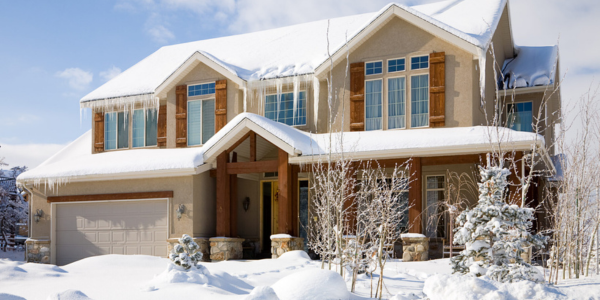
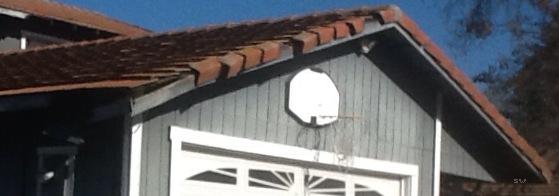
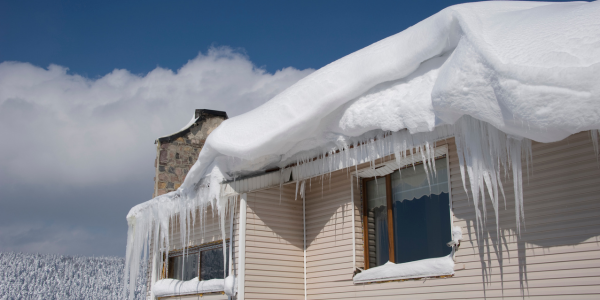



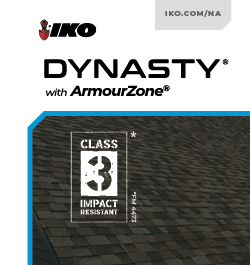
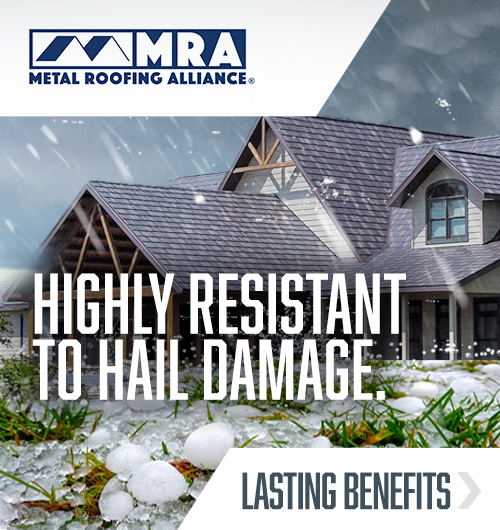


Comments
Leave a Reply
Have an account? Login to leave a comment!
Sign In